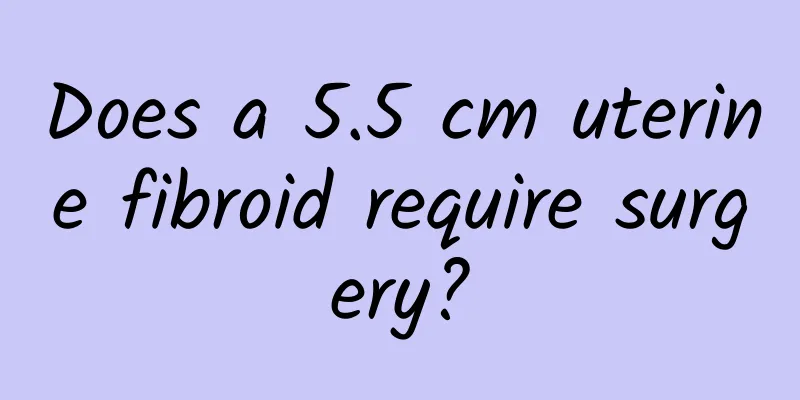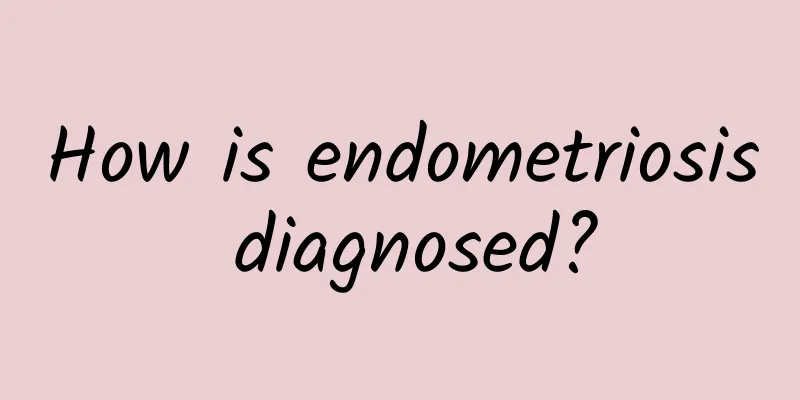Does a 5.5 cm uterine fibroid require surgery?

|
Whether a 5.5 cm uterine fibroid requires surgery depends mainly on its location and symptoms. Generally, fibroids of this size may require surgery to avoid potential health effects. 1. Symptoms and effects: Symptoms of uterine fibroids vary. Some women may not feel any discomfort at all, while others may experience anemia, frequent urination, constipation, menstrual disorders, and other problems. These symptoms are usually closely related to the size, location, and growth rate of the fibroids. If the fibroids press on the bladder or intestines, it may cause frequent urination or constipation; if it affects the endometrium, it may cause menstrual abnormalities. 2. Types of fibroids: Uterine fibroids can grow in different parts of the uterus and are mainly divided into three types: intramyometrial, subserous, and submucosal. Intramyometrial fibroids are the most common, while subserosal fibroids grow outside the uterus and may affect other organs. Submucosal fibroids grow below the endometrium and usually have a greater impact on menstruation. For 5.5 cm fibroids, the specific surgical method will vary depending on the location of their growth. 3. Surgery selection: The choice of surgery depends mainly on the location of the fibroids and the severity of the symptoms. For intramyometrial or subserous fibroids, minimally invasive surgery or laparotomy can be selected for removal. If the fibroids are located under the mucosa, surgical removal under hysteroscopy is usually required. These surgical methods have their own advantages and disadvantages. The specific choice requires full communication with the doctor and a decision based on personal health status and fertility plan. 4. Benign characteristics and risks: Although most uterine fibroids are benign tumors and are related to elevated estrogen levels, this does not mean that they can be taken lightly. Fibroids that are not treated for a long time may continue to grow and cause more serious symptoms or complications. Although the risk of malignant lesions is low, regular monitoring and timely treatment are still wise. 5. Lifestyle and prevention: Although the exact cause of uterine fibroids is not yet fully understood, a healthy lifestyle may help reduce the risk. Maintaining a healthy weight, a proper diet, moderate exercise, and regular physical examinations are all effective measures to maintain uterine health. Active preventive measures are particularly important for women with a family history or other risk factors. Whether a 5.5 cm uterine fibroid requires surgery depends on a variety of factors, including symptoms, location of the fibroid, and personal health. Timely medical attention and communication with doctors are key steps to ensure health. Through scientific diagnosis and treatment plans, women can effectively manage uterine fibroids and maintain a healthy life. |
<<: Is 3D color Doppler ultrasound accurate for intrauterine adhesions?
>>: Is chronic cervicitis serious?
Recommend
How to prevent irregular menstruation?
How to prevent irregular menstruation? To prevent...
Early clinical symptoms of cervicitis
Cervicitis has seriously affected our lives in re...
What is amenorrhea and endometrial thickening?
What is amenorrhea and endometrial thickening? Am...
Can endometrial thickening be completely cured?
Endometrial thickening is a common gynecological ...
How to prevent premature menopause
How to prevent premature amenorrhea? Premature am...
What are the ways to prevent cervical erosion? 5 tips to keep you away from cervical erosion
Nowadays, since cervical erosion is still relativ...
Traditional Chinese Medicine has a magic formula for weight loss. Ear acupuncture and laser acupuncture are new
Recently, a method of weight loss through ear acu...
To prevent pelvic inflammatory disease, you must beware of its causes
Among the diseases of women nowadays, pelvic infl...
Correct prevention methods for chronic cervicitis
The treatment of chronic cervicitis is a long pro...
What should I do if my endometrium is 9mm and my period hasn't come for half a month?
What should I do if my endometrium is 9mm and my ...
Brief analysis of the hazards of cervical erosion
Cervical erosion is a common gynecological diseas...
What are the diagnostic methods for female cervical erosion? 4 diagnostic methods for female cervical erosion
What are the methods for checking cervical erosio...
What to do about irregular menstruation during menopause? 3 dietary taboos for irregular menstruation during menopause
Menopausal women are also prone to irregular mens...
I have back pain, and sometimes my menstruation is clean, but a few days later there is black and brown stuff coming back. Why?
I have back pain, and sometimes my menstruation i...
How is surgery performed for ectopic pregnancy?
Ectopic pregnancy surgery mainly includes laparos...









